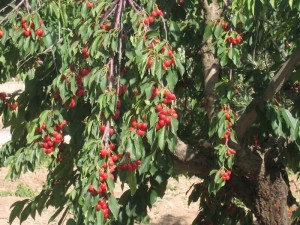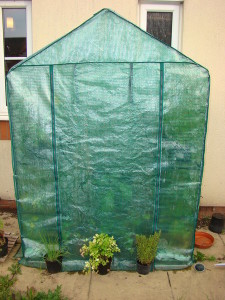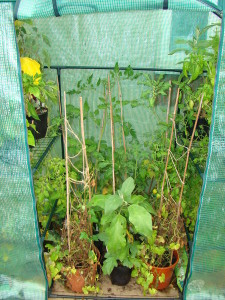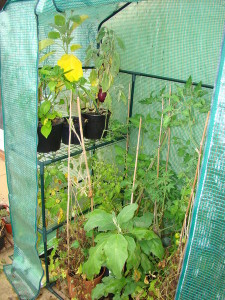 If you are lucky enough to have a cherry tree in your yard, I am sure I don’t need to tell you how much enjoyment can come from them. Just eating the delicious cherries that spawned from your tree is a rewarding experience in itself. Looking out your back window and seeing a magnificent, glorious cherry tree is also rewarding. Most people are impressed just by the fact that you have a cherry tree, because they are usually thought of by non-gardeners as some sort of exotic plant.
If you are lucky enough to have a cherry tree in your yard, I am sure I don’t need to tell you how much enjoyment can come from them. Just eating the delicious cherries that spawned from your tree is a rewarding experience in itself. Looking out your back window and seeing a magnificent, glorious cherry tree is also rewarding. Most people are impressed just by the fact that you have a cherry tree, because they are usually thought of by non-gardeners as some sort of exotic plant.
But along with the joys that a cherry tree can bring, there are many annoyances. They seem to attract more unwanted creatures than any other plant in the world. Almost every day it seems like there is a new type of pestilence swarming the tree, trying to get a nibble of its delicious fruits. I can’t say I blame them, but if they want to eat delicious fruits then they should grow their own trees.
One of the main and most constant problems that most people deal with is birds eating the fruit off the tree. It can seem almost impossible to get rid of this pest. After all, they can come in from any angle and make a quick getaway with the cherries. Or they can sit undetected in the branches and munch away all day. A bird certainly has its versatility on its side. Those little guys can be a real hassle to catch or repel. However, there are several different ways you can deter the birds from your house.
The most used way of repelling birds is to place a plastic owl within the vicinity of the house. If you find any animal that usually eats birds and purchase a plastic version, usually real birds will be instinctual enough to avoid it. These can include snakes, owls hawks, or scarecrows (OK, maybe they don’t eat birds normally. But they sure scare the birds for some reason). Most of the time you can purchase these at your local gardening store. If you want a different version or a more lifelike representation, if you look online then you’re sure to find something that will work.
If you get a plastic animal of some sort, usually it will cure the bird problem for a while. However, some birds are just really brave (or really stupid) and will continue to eat from your tree. Almost any reflective surface or noisy object will prevent the birds from coming too close. I personally like to use reflective tape designed for scaring birds. You can purchase this at any gardening store. I usually use this in combination with a large assortment of wind chimes for maximum scaring. Once you have a plastic animal along with reflective items and noisy items, almost all birds will be too terrified to even go close.
While airborne creatures might take a little more than their share of fruit, you should still consider leaving one tree exclusively for them. While they might seem like a pest sometimes, birds can be the one thing that livens up your garden. If you’re used to having birds and then all of a sudden you’ve scared them all away, you’ll feel like there is something missing from your yard. Something that, on the inside, you truly loved all along.
Of course, birds don’t just like cherry trees, but they will attack many soft fruits, including raspberries and strawberries and even attack newly planted vegetables such as onions and peas. These can be netted or you can use some sort of bird scarer to keep them off. I have found that hanging audio CD’s around the seedlings will help keep them off, these shine as they turn in the wind and scare the birds off. At the end of the day you may lose some of your crops to birds but if you take precautions then you can minimize your loss.


























